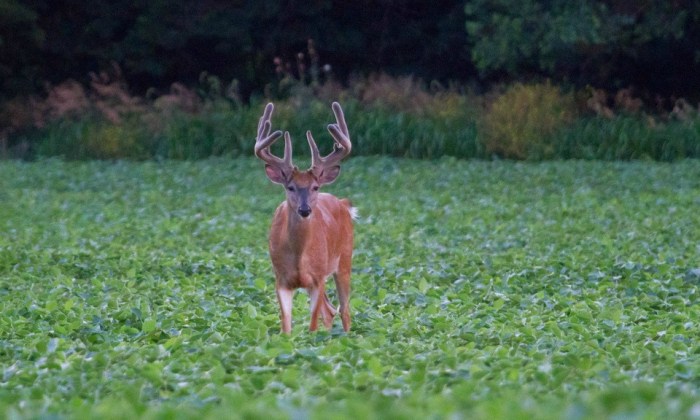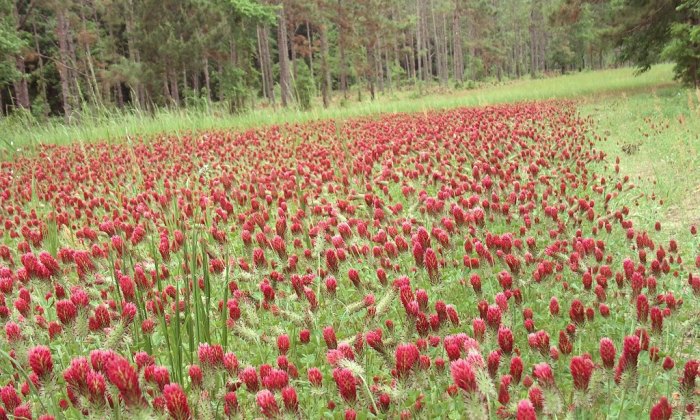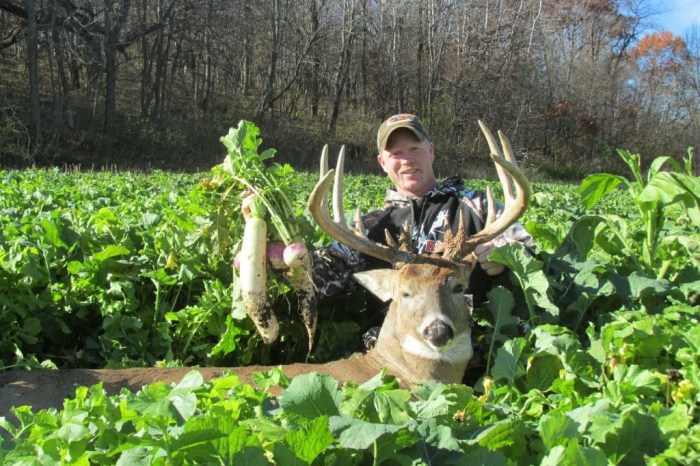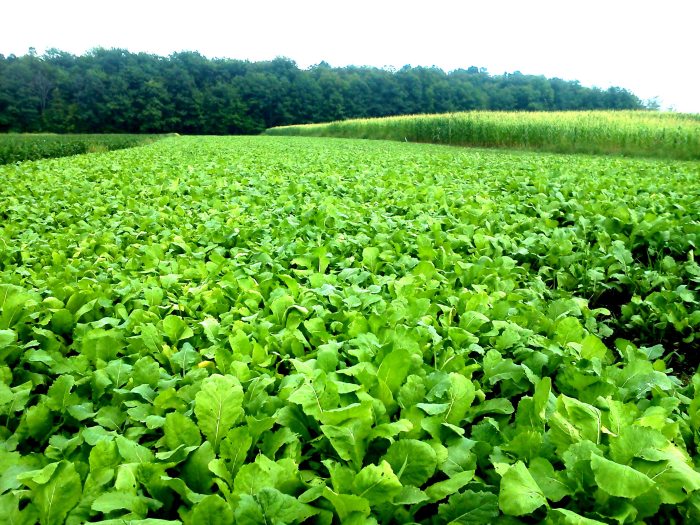In the realm of wildlife management, the creation of deer food plots has emerged as a crucial practice, providing sustenance and enhancing the habitats of these graceful creatures. This comprehensive guide delves into the best plants for deer food plots, exploring their nutritional value, palatability, and the art of establishing and maintaining these vital feeding grounds.
As we embark on this journey, we will uncover the benefits of incorporating legumes into food plots, maximizing nitrogen fixation, and improving soil health. By understanding the specific needs of different deer populations and tailoring food plots accordingly, we can create thriving ecosystems that support healthy deer herds.
Types of Plants Suitable for Deer Food Plots

Establishing food plots tailored to deer preferences not only attracts deer but also enhances their health and vitality. Several plant species are highly palatable to deer and offer a range of nutritional benefits.
When selecting plants for deer food plots, consider their nutritional value, palatability, and adaptability to the local climate and soil conditions.
Legumes
Legumes, such as soybeans, cowpeas, and clover, are rich in protein, which is essential for muscle growth and repair. They also provide essential amino acids and are highly palatable to deer.
- Soybeans: High in protein (36-40%), digestible energy, and essential amino acids.
- Cowpeas: Fast-growing and highly palatable, providing protein (25-30%) and carbohydrates.
- Clover: Nitrogen-fixing perennial with high protein content (20-25%) and excellent palatability.
Brassicas, Best plants for deer food plots
Brassicas, including turnips, radishes, and kale, are nutrient-dense and highly attractive to deer. They are rich in vitamins, minerals, and carbohydrates.
- Turnips: High in carbohydrates (10-15%), protein (10%), and vitamins A, C, and K.
- Radishes: Fast-growing and palatable, providing vitamins A, C, and K, as well as minerals.
- Kale: Excellent source of vitamins A, C, and K, along with calcium and antioxidants.
Establishing and Maintaining Deer Food Plots

Establishing and maintaining deer food plots requires careful planning and management to ensure optimal growth and nutritional value for deer. Proper soil preparation, planting techniques, and ongoing maintenance are essential for successful food plot establishment.
Soil Preparation
Before planting, the soil should be tested to determine its pH level and nutrient content. Lime may be added to adjust the pH to between 6.0 and 6.5, which is ideal for most deer food plot plants. The soil should also be tilled or disked to loosen it and remove any weeds or debris.
When planning deer food plots, consider plants that provide high-quality forage. Deer prefer clover, alfalfa, and chicory. For hanging plants indoors, visit hanging plants bunnings . Deer food plots should also include a variety of plants to attract deer throughout the year.
By providing a diverse food source, you can improve the health and vitality of your deer herd.
Planting
Deer food plot seeds or seedlings should be planted at the appropriate time of year, typically in the spring or fall. Seeds should be planted at the recommended depth and spacing for the specific plant species. Seedlings should be planted slightly deeper than they were in the nursery container, and the soil should be firmed around the roots.
Plot Size and Spacing
The size and spacing of deer food plots will depend on the number of deer in the area and the available land. A general rule of thumb is to plant 1 acre of food plot for every 10-15 deer. The plots should be spaced far enough apart to prevent deer from overgrazing any one area.
Irrigation
Deer food plots may require irrigation during dry periods, especially during the establishment phase. Water should be applied evenly and consistently, avoiding overwatering or underwatering. Drip irrigation or overhead sprinklers can be used, depending on the size and layout of the plot.
Weed and Pest Management
Weeds and pests can compete with deer food plot plants for nutrients and water. Regular mowing or herbicide application can be used to control weeds. Pests, such as insects and rodents, can be controlled through the use of insecticides or traps.
Benefits of Incorporating Legumes into Food Plots
Incorporating legumes into deer food plots offers significant advantages. Legumes are plants that form symbiotic relationships with nitrogen-fixing bacteria, enabling them to convert atmospheric nitrogen into a form usable by plants. This process, known as nitrogen fixation, enriches the soil, promoting plant growth and improving overall soil health.
In addition to offering sustenance to deer, certain plants excel in raised bed gardens. From leafy greens to herbs, best plants for raised bed gardens can enhance both the nutritional value and aesthetic appeal of these elevated growing spaces. By incorporating a diverse selection of plants into deer food plots, hunters can create a thriving ecosystem that supports wildlife while also providing ample food sources for their quarry.
Suitable Legume Species for Deer Food Plots
- Alfalfa:A high-protein legume that provides excellent forage for deer throughout the year.
- Clover:A low-growing legume that offers a palatable and nutritious source of food for deer.
- Soybeans:A warm-season legume that provides high-energy forage, especially during the fall.
- Vetch:A cool-season legume that fixes nitrogen and provides a dense ground cover.
- Cowpeas:A warm-season legume that produces abundant forage and tolerates drought conditions.
Designing Food Plots for Specific Deer Populations
Designing food plots tailored to specific deer populations is crucial for maximizing their effectiveness. Factors like deer density, habitat characteristics, and seasonal changes should be carefully considered.
In areas with high deer density, food plots should be larger and more numerous to meet the increased nutritional demands. In contrast, smaller plots may suffice in areas with lower deer densities. The habitat type also influences food plot design.
For instance, plots in forested areas should focus on providing browse, while those in open areas can prioritize forage.
Deer food plots are a great way to attract and sustain deer populations. When selecting plants for these plots, it’s important to consider the specific needs of the deer in your area. In Nashville, TN, for instance, native plants that thrive in the local climate are a great choice.
For more information on the best plants for your area, check out this guide to best plants for nashville tn . Returning to the topic of deer food plots, it’s also important to consider the nutritional value of the plants you choose.
Deer prefer plants that are high in protein and low in fiber.
Plant Species Selection
The choice of plant species should align with the nutritional needs and preferences of the target deer population. For example, in areas where deer rely heavily on browse, species like autumn olive, crabapple, and silky dogwood are recommended. In regions where forage is more prevalent, clover, alfalfa, and chicory are suitable options.
Plot Configuration
The shape and arrangement of food plots can also impact their effectiveness. Linear plots along field edges or fence rows provide easy access to deer while minimizing disturbance. Irregularly shaped plots with varying vegetation heights create microhabitats that cater to different deer preferences.
Monitoring and Evaluating Food Plot Success

Monitoring and evaluating the success of deer food plots are crucial for optimizing their effectiveness and achieving the desired outcomes. Various methods can be employed to assess deer usage and the overall performance of food plots.
Methods for Monitoring Deer Usage
Monitoring deer usage of food plots involves gathering data on the frequency and duration of visits by deer to the plots. Trail cameras, a non-invasive monitoring tool, can provide valuable insights into deer activity patterns. By placing trail cameras strategically within the food plots, landowners can capture images or videos of deer utilizing the plots.
Vegetation surveys, another monitoring method, involve assessing the level of forage consumption by deer. By comparing the height and density of vegetation before and after deer browsing, landowners can estimate the extent to which the food plots are being utilized.
Evaluating Food Plot Effectiveness
Evaluating the effectiveness of food plots involves assessing their impact on deer health, nutritional status, and population dynamics. Monitoring deer body condition scores, a measure of overall health, can provide insights into the nutritional value of the food plots. Additionally, conducting deer population surveys can help determine whether the food plots are contributing to population growth or stability.
Deer food plots provide nourishment for wildlife, but did you know that the best plants for these plots can also enhance the beauty of your pond? Just as certain plants attract deer, others thrive in the moist environment around ponds.
By incorporating best plants for around pond into your deer food plot design, you can create a vibrant ecosystem that benefits both wildlife and your outdoor space.
Landowners should regularly review the monitoring data and make adjustments to the food plots as needed to ensure their continued effectiveness and meet the nutritional requirements of the deer population.
Last Recap: Best Plants For Deer Food Plots

Ultimately, the success of deer food plots lies in their ability to provide nutritious forage, attract deer, and enhance their overall well-being. By carefully selecting the right plants, implementing sound management practices, and monitoring their effectiveness, we can create havens for these magnificent animals, ensuring their continued presence in our natural landscapes.
FAQ Resource
What are the most preferred plant species for deer food plots?
Clover, alfalfa, chicory, and soybeans are highly palatable and nutrient-rich options for deer.
How do I establish a successful deer food plot?
Prepare the soil, plant seeds or seedlings at the right spacing, and ensure proper irrigation and weed control.
Why is it beneficial to incorporate legumes into deer food plots?
Legumes fix nitrogen, enriching the soil and providing essential nutrients for deer.